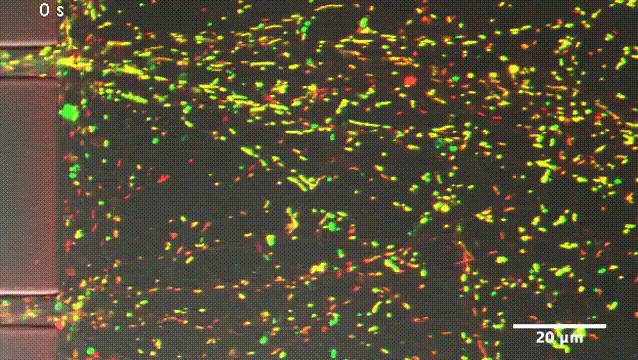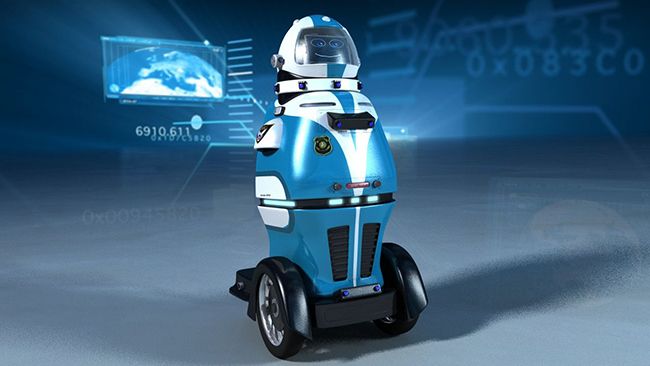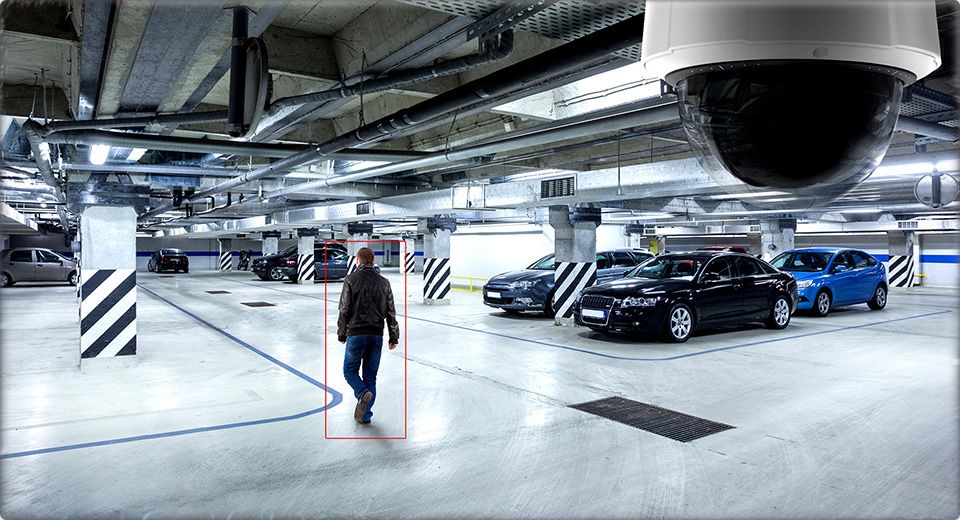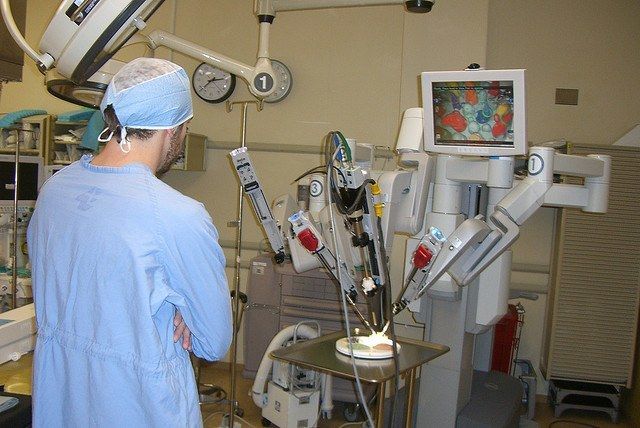Page 10603
Jun 15, 2016
Ripple Secures NY Bitcoin License | PYMNTS
Posted by Odette Bohr Dienel in categories: bitcoin, finance
“The state of New York just got another bitcoin company that can legally operate under the auspices of the state financial regulator’s guidelines.”
Jun 15, 2016
Gamma 2 Robotics launches autonomous security robot, partners with Hexagon
Posted by Karen Hurst in categories: drones, employment, robotics/AI, security
Mass killings in US and Europe during 2015 & 2016: Pulse in Orlando — 49 killed; Brussels — 32 dead; Paris — 150 dead; San Bernardino 14 dead… With these numbers we have to assess could Robots equipped with sensors, communications, Tasers and other defenses be used for security guards to protect buildings and public areas and events as a defense to save lives. I believe getting robots equipped with sensor technology as well as other equipment could help towards combating terror. Also, drones should be looked at to be used in conjunction with these bots.
Gamma 2 Robotics introduced its new RAMSEE security patrol robot at Hexagon’s international conference HxGN LIVE, which is being held June 13–16 in Anaheim, California. The launch is part of a new partnership with Hexagon Safety & Infrastructure.
RAMSEE is a physical presence that patrols autonomously without supervision and provides real-time data on intruders, motion, heat, fire, smoke, gas and more. the company says in a news release.
Continue reading “Gamma 2 Robotics launches autonomous security robot, partners with Hexagon” »
Jun 15, 2016
Mobilizing mitochondria to regenerate damaged neurons
Posted by Sean Brazell in categories: biotech/medical, health, neuroscience

Boosting the transport of mitochondria (cell energy suppliers) along neuronal axons enhances the ability of mouse nerve cells to repair themselves and regrow after injury or disease, researchers at the National Institute of Neurological Disorders and Stroke report in The Journal of Cell Biology.
Neurons need large amounts of energy to extend their axons long distances through the body. This energy — in the form of adenosine triphosphate (ATP) — is provided by mitochondria.
Continue reading “Mobilizing mitochondria to regenerate damaged neurons” »
Jun 15, 2016
Higher intake of whole grains associated with lower risk of major chronic diseases and death
Posted by Sean Brazell in categories: biotech/medical, food

A meta-analysis of 45 studies (64 publications) of consumption of whole grain by an international team of researchers, led by Dagfinn Aune, PhD, at Imperial College London, found lower risks of coronary heart disease and cardiovascular disease overall, as well as deaths from all causes and from specific diseases, including stroke, cancer, diabetes, infectious and respiratory diseases.
The researchers say these results “strongly support dietary recommendations to increase intake of whole grain foods in the general population to reduce risk of chronic diseases and premature mortality.”
Jun 15, 2016
We’re about to become more intelligent than at any other point in human history
Posted by Shailesh Prasad in categories: biotech/medical, genetics, information science, robotics/AI
Provided the variants for intelligence can be figured out and the genetic editing tools sufficiently refined (no small matter, in either case), Hsu thinks there’s an incredible potential for improvement. He’s written for the science magazine Nautilus that his calculations from the work at BGI indicate a potential for “very roughly, about 100 standard deviations of improvement, corresponding to an IQ of over 1,000.”
That’s a level of intelligence beyond what we can comprehend right now.
At the same time, we’re not just working on improving biological intelligence. We’re also working on artificial intelligence and machine learning. Smarter humans might be better able to solve those problems, helping us create smarter machines. Smart machines capable of processing big data are already essential for efforts to understand millions of human genomes. These things work together.
Continue reading “We’re about to become more intelligent than at any other point in human history” »
Jun 15, 2016
Global Biometrics Market Worth US$ 24.8 Billion by 2021 — Vein Scanner to Outpace Fingerprint Recognition Biometrics — Research and Markets
Posted by Karen Hurst in categories: computing, government, information science, mobile phones, privacy, security
All is promising for Biometrics and biometric informatics; however, the technologies to date leveraged in IoT and other environments for parsing, analysis (especially predictive analysis), as well as better presented needs to be improved to be of value. We have seen great progress in the collection of the information and for some basic identification capabilities it looks good; however, to truly be effective and of value we need a lot more work done in this space especially when you look at today’s landscape of collecting information in areas of IoT and processing/ analysis with big data.
The global biometrics market is projected to cross US $ 24.8 billion by 2021. Fingerprint recognition biometric systems are the most preferred type of biometric systems used across the globe, owing to their ease of use, low cost, high speed and accurate results.
Biometric systems are used across various public as well as private offices for enhancing the security of data and information, as these systems provide an accurate validation as compared to traditional methods such as ID cards, PINs, passwords, etc. Increasing use of biometrics in e-commerce and cloud computing solutions, coupled with initiatives taken by the government of various countries across the world to adopt biometrics systems for identification and verification purposes are some of the major factors driving demand for biometric solutions, globally.
Moreover, introduction of e-passports and e-visas, use of biometrics in criminal identification, increasing demand for smartphones integrated with biometric technologies and implementation of biometric technology in election administration are anticipated to drive the global biometrics market over the next five years.
Jun 15, 2016
U.S. intelligence community examining video analytics
Posted by Karen Hurst in categories: privacy, robotics/AI, terrorism
With the element of terrorists in society today; things like video data/ information and biometrics will grow increasingly in demand within the immediate years a key peice that will require improvements in the timely performance and interpretation of the information via the technologies used to collect, analyze, interpret, and present the information to users as well as respecting the privacy of innocent civilians. However, Civilians will also need to do their own part in reasonableness of when and why certain sets of data must be collected.
The Intelligence Advanced Research Projects Activity (IARPA), a division of the Office of the Director of National Intelligence, will host a Proposers’ Day Conference for the Deep Intermodal Video Analytics (DIVA) program on July 12, 2016, in anticipation of the release of a new broad agency announcement (BAA) solicitation.
The purpose of the conference, which will be held in Washington, DC, will be to provide information on DIVA and the research problems the program aims to address, to address questions from potential proposers and to provide a forum for potential proposers to present their capabilities for teaming opportunities.
Continue reading “U.S. intelligence community examining video analytics” »
Jun 15, 2016
Chinese company prints villa on-site
Posted by Karen Hurst in categories: 3D printing, 4D printing, habitats
Amazing; imagine when 4D printing produces building materials that self assemble themselves and with 5D printing the building can monitor the building and repairs itself someday in the future.
Hushang Tengda has 3D printed a 400 square meter luxury villa, on site, in just 45 days.
Construction is a huge deal in the 3D printing world right now and the likes of WinSun have made an impact with the first 3D printed office in Dubai. It also printed a five-storey apartment building and 10 3D printed houses in just 24 hours back in China. This villa is a still a breakthrough though, because it was built on site.
Jun 15, 2016
8 Digital Health Jobs of the Future to Watch
Posted by Karen Hurst in categories: 3D printing, 4D printing, computing, drones, employment, health, information science, internet, quantum physics, robotics/AI
Agree. So as a tech engineer, futurist, innovator, leader you have 3 key tracks to remain relevant in the future: bio/ living technology, quantum, and a hybrid of living/ bio meets quantum computing.
Editor s Note: Richard van Hooijdonk is a futurist and international keynote speaker on future technologies and disruption and how these technologies change our everyday lives. Van Hooijdonk and his international team research mega trends on digital health, robotic surgery, drones, the internet-of-things, 3D/4D printing, Big Data and other how new technologies affects many industries.
With people living increasingly longer lives, medical care from surgeons, physicians, pharmacists and dentists will increase as well. And since the future of healthcare will look very different from what it is today, the medical field may just be the right industry for you, even if being a doctor or nurse is not your calling. Many new technologies will be incorporated into the healthcare industry and we will see things like robotic surgeries and 3D-printed organ implants, to name a few. This means we will be seeing a whole new host of career opportunities, even for jobs that don t actually exist yet.
Continue reading “8 Digital Health Jobs of the Future to Watch” »















